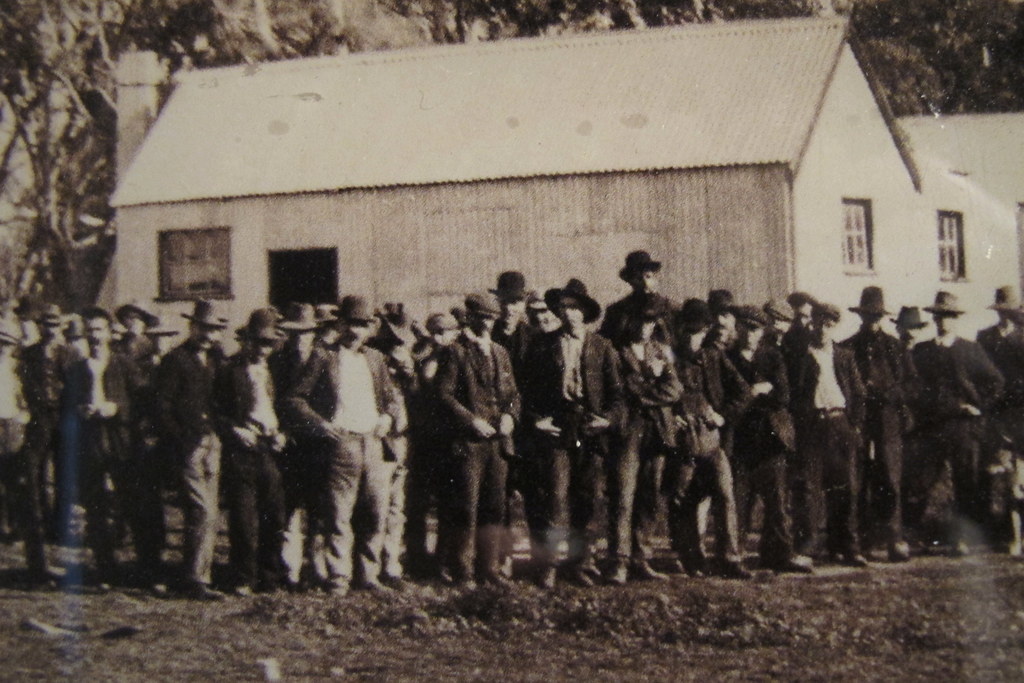Hume Highway: On the Way
Albury to Gundagai
The old highway through Bowna has been closed and the new route runs through Table Top. Fingerboards in Albury make the way clear.
Holbrook, situated on Ten-Mile Creek, is the centre of rich cattle, sheep, and wheat country, and has a population of 4000.
In places, the hills, skirted by the main road, are remarkable formations, while volcanic rock outcrops are frequently visible.
The land surrounding Gundagai is devoted to grazing, wheat, maize, lucerne, dairying, and fruit growing. It is estimated that more than a million sheep and 60,000 cattle are kept in the district, and the industries in the town include a cheese factory and freezing works.
Extensive changes were being made to this section of the highway when this Guide was revised in 1938. A new road was being constructed from the Adelong turn-off at Tumblong right through to Tarcutta. When this has been completed, the route will be shorter and the difficulties of this section eliminated.
Meanwhile, 23 miles of rough gravel surface, with steep grades and sharp turns, must be traversed.
The Monaro Highway enters the Hume Highway near Hillas Creek. It begins at Bega, crosses the Brown Mountain to Cooma, and passes through Kiandra and Tumut.
The Sturt Highway begins at Lower Tarcutta and runs through to Mildura.
the esegi ve Denis
Goulburn has a population of 15,000 people, and is one of the most important towns in New South Wales. It is noted for its granite and slate deposits, and its other industries include woollen mills, soapmaking, brick-making and lime burning.
Leaving Goulburn, the route first runs parallel to the cliffs of the surrounding hills, on an eminence of which is the Goulburn War Memorial.
It then passes through forests to Marulan, then deviates (at Paddy's River) from the old highway through beautiful Mossvale.
Many tourists still take the Mossvale route. The road is good and more picturesque than the new highway. At Mossvale a road to the right leads to the beautiful Kangaroo Valley and Cambewarra look-ut, from which one of the finest views in Australia is obtained. It joins the Prince's Highway at Nowra.
The new highway runs through Berrima to the Wombeyan Caves Road, then bears right into Mittagong. From there a wonderful road leads to historic Picton, The Razor-back is next climbed and the route then takes the tourist through the oldest settled districts of Australia via Camden and Narellan
From Camden the new road, built on the historic Cowpastures Road to Liverpool, cuts out the old highway and Campbelltown.
Albury to Gundagai
The old highway through Bowna has been closed and the new route runs through Table Top. Fingerboards in Albury make the way clear.
Holbrook, situated on Ten-Mile Creek, is the centre of rich cattle, sheep, and wheat country, and has a population of 4000.
In places, the hills, skirted by the main road, are remarkable formations, while volcanic rock outcrops are frequently visible.
The land surrounding Gundagai is devoted to grazing, wheat, maize, lucerne, dairying, and fruit growing. It is estimated that more than a million sheep and 60,000 cattle are kept in the district, and the industries in the town include a cheese factory and freezing works.
Extensive changes were being made to this section of the highway when this Guide was revised in 1938. A new road was being constructed from the Adelong turn-off at Tumblong right through to Tarcutta. When this has been completed, the route will be shorter and the difficulties of this section eliminated.
Meanwhile, 23 miles of rough gravel surface, with steep grades and sharp turns, must be traversed.
The Monaro Highway enters the Hume Highway near Hillas Creek. It begins at Bega, crosses the Brown Mountain to Cooma, and passes through Kiandra and Tumut.
The Sturt Highway begins at Lower Tarcutta and runs through to Mildura.
the esegi ve Denis
Goulburn has a population of 15,000 people, and is one of the most important towns in New South Wales. It is noted for its granite and slate deposits, and its other industries include woollen mills, soapmaking, brick-making and lime burning.
Leaving Goulburn, the route first runs parallel to the cliffs of the surrounding hills, on an eminence of which is the Goulburn War Memorial.
It then passes through forests to Marulan, then deviates (at Paddy's River) from the old highway through beautiful Mossvale.
Many tourists still take the Mossvale route. The road is good and more picturesque than the new highway. At Mossvale a road to the right leads to the beautiful Kangaroo Valley and Cambewarra look-ut, from which one of the finest views in Australia is obtained. It joins the Prince's Highway at Nowra.
The new highway runs through Berrima to the Wombeyan Caves Road, then bears right into Mittagong. From there a wonderful road leads to historic Picton, The Razor-back is next climbed and the route then takes the tourist through the oldest settled districts of Australia via Camden and Narellan
From Camden the new road, built on the historic Cowpastures Road to Liverpool, cuts out the old highway and Campbelltown.
Extract from Herald Road Guide kindly supplied by Mr Hoss Bolenski
 |
| MORE: History on the Hume series |














































